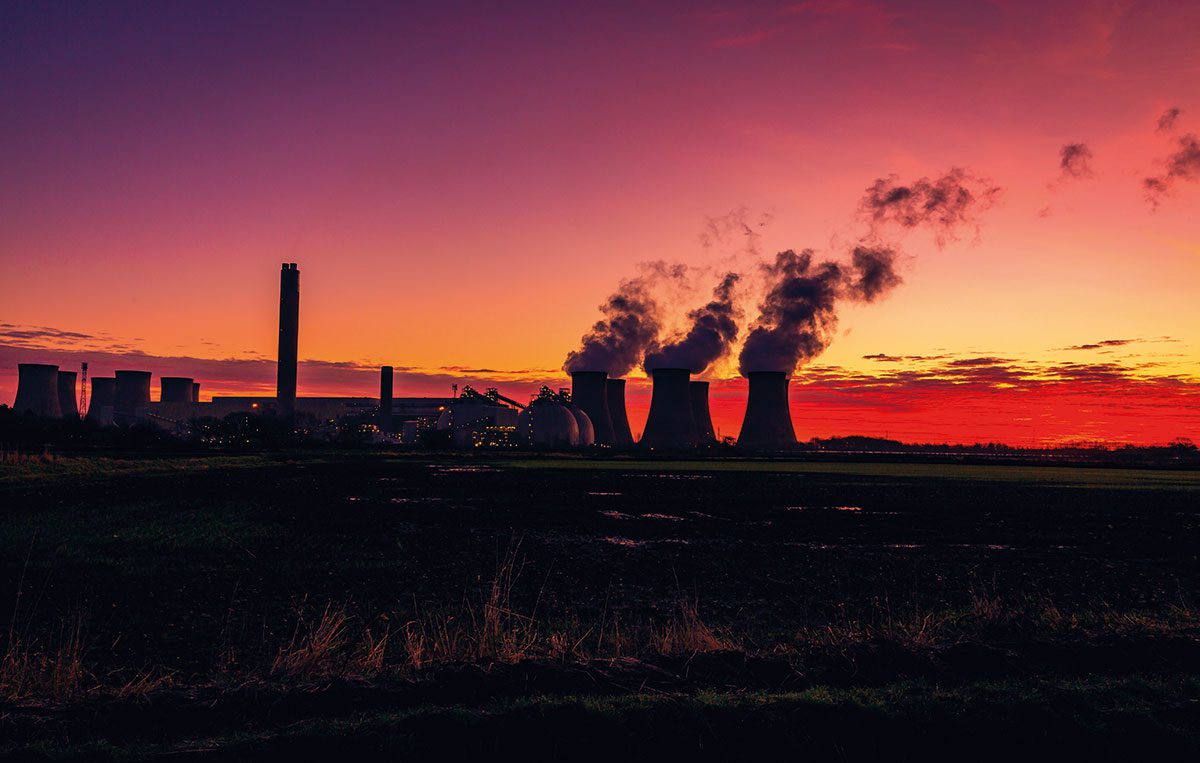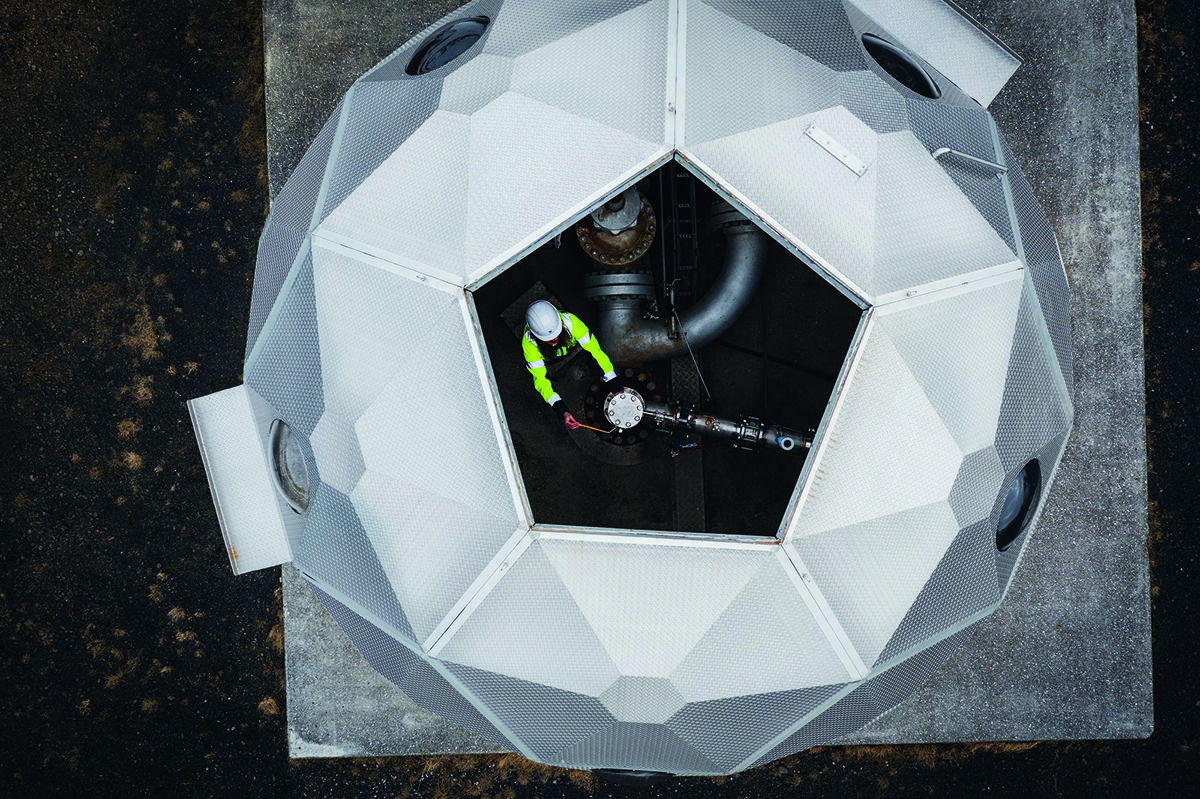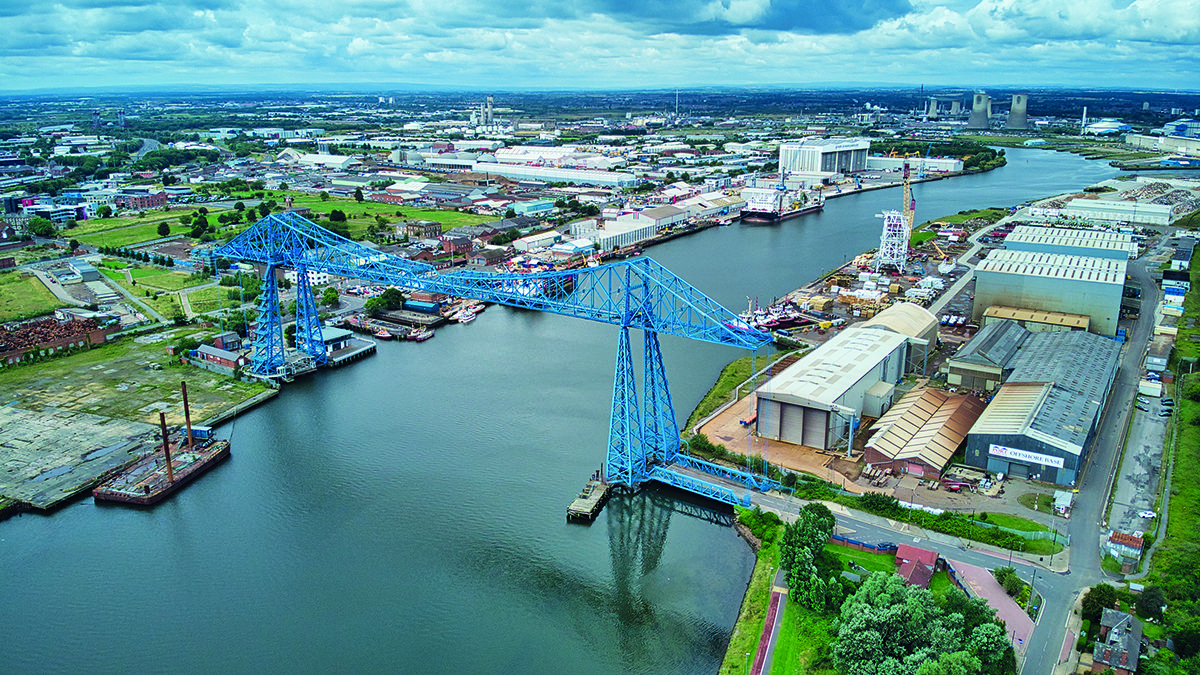
The drive to scale-up carbon capture and storage (CCS) appears to be underway on both sides of the Atlantic, with the only problem being that we’re not yet sure how to do it – at the required scale, at least. Envirotec reviews recent announcements and opinions about what ought to be done.
Nothing short of a new industrial revolution appears to be required if carbon capture is to make a meaningful dent in the changing climate, suggest observers. The industry underlying CCS (and its close relation, DAC) will “have to rival in size the current fossil fuel industry”, to quote one influential commentator, Wake Smith.1
It’s had an unusual funding model so far, to say the least – and there seem few precedents for a new industry being funded in large part by the one it intends to replace. Suspicions clearly linger that fossil fuel sector motivation has been more about self-preservation, and that governments like the UK’s – currently fast-tracking around £20 billion of spending towards four major carbon-capture projects (see “On track?” side panel, at the end of the article) – are frittering away funds on an approach still in its infancy, and extending the life of an industry that is already obsolete.
The viability of CCS as a way to decarbonize fossil fuels has clearly faltered in recent years, but the oil and gas sector remains an important partner in developing this nascent approach, with relevant infrastructure, skills and experience (notably with providing a storage destination for much of the carbon we aim to capture).
And when it comes to identifying a demand for the carbon captured, Enhanced Oil Recovery (EOR) has been one of the few commercial applications to date (used to drain the last dregs from an oil field that is otherwise depleted).
CCS has certainly been slow to get off the ground commercially. There are 30 such CCS facilities in operation across the world at present, according to The 2022 Global CCS Institute Status Report,2 with 11 more in construction, and more than 150 in various stages of development. This needs to increase to more than 2000 by 2050, says the same report.
And these are able to capture in the region of a thousandth of current annual emissions.
One recent market prediction expects global CCUS capacity to reach 1.8 Gtonnes per annum by 2043.3 How much do we need to store in total? A cool 115 Gtonnes by 2060, according to one oft-cited estimate.4
What’s even more striking is how little of the existing capacity actually addresses what seems to be the key matter at hand: advancing progress towards net zero (or indeed, the negative emissions now believed to be necessary). Around half of current CCS capacity is dedicated to removing CO2 from natural gas, before it is burned to generate power.5
But there seem few sectors where the motivation for using carbon capture is definitely the right one. Energy-from-waste (EfW) might offer a clear-cut case for its use. As enfinium pointed out in August, CCS is the only net zero compliant technology available for the residual waste management sector.
Reduction vs removal
A distinction is increasingly made between emissions reduction (i.e., stopping stuff being emitted in the first place) and emissions removal (removing emissions already present in the atmosphere), both activities in which the technology of carbon capture has a place. Emissions reduction should clearly be the main focus, but some CO2 emissions are hard to abate – the so-called residual emissions arising from sectors like agriculture and aviation (which will be less expensive to remove than to eliminate). A rule of thumb appears to be: 90-95% emissions reduction, and 5-10% emissions removal.6
A longer-term objective, of course, is to not only eliminate emissions but to achieve net-negative emissions (to meet the level of CO2 in the atmosphere required by the Paris Agreement), and this will require emissions removal – often discussed as “Carbon Dioxide Removal (CDR)”.
While many critics of carbon capture are concerned that carbon removal will take priority over emissions reduction (with fossil fuel companies leaning more in the direction of “business as usual”), the moral hazard this presents appears to have been a talking point with those championing CDR. It will lead to failure to stay within the Paris Agreement limits, said DAC developer Climeworks in April, calling for a more vigorous assertion of this principle of separation. The firm said it needed to be enshrined when setting carbon crediting standards, for example, to ensure CDR credits are considered “a separate category from emissions reductions and avoidance”.
This seems to be the position of many other policy-setting and advocacy groups, and the EU is said to be looking to tailor its carbon certification for CDR.
The bigger picture
CDR encompasses a menu of removal options, and the required level of deployment of each has yet to become clear. It includes “natural” options such as planting trees, soil carbon sequestration, biochar, enhanced weathering and ocean iron fertilization. There are obstacles to deploying these at scale currently, or (as with the last two) they are at the stage of initial exploration.7
Carbon capture technology finds a place within not-so-natural CDR approaches, notably in Direct Air Capture (DAC) and – paired with bioenergy – in Bioenergy with Carbon Capture and Storage (BECCS).
Better than just planting trees, BECCS entails planting them, chopping them down, burning them, and then syphoning off the CO2 emissions to store it underground. While it doesn’t sound terribly green, it does help overcome the demands that solutions like forestation make on land use, since the land can be continually replanted and harvested.
In the UK, BECCS is being primed for a role in reaching net zero, and the recent Biomass Strategy, published in August, sets out a plan to – in the immediate term (to 2035) – “transition away from unabated emission uses of biomass where possible to uses such as BECCS”. The report says this will be “critical to meeting net zero”, to balance the residual emissions from hard-to-decarbonise sectors.
How much CDR does the UK plan to use? The Net Zero Strategy published in 2021,8 said it could be deployed at a scale of between 75 and 81 MtCO2 /yr by 2050 “to help compensate for residual emissions”.
“BECCS is expected to make the bulk of this,” said the Biomass Strategy, “potentially delivering 52-58 MtCO2 /yr by 2050.”9
The document advises that new or existing biomass applications should start thinking about adding a CCS stage, “in the short to medium term in order to plan a transition to BECCS.”
Detractors point out that BECCS is still unproven at scale in the UK, although it is operating elsewhere in the world in demonstration plants and at commercial scale. It also seems to require almost comical quantities of land, such as 33-43% of all available cropland in the world, as one 2015 study by MIT estimated (for a BECCS program large enough to contribute meaningfully to meeting the 1.5ºC target).
Some of what commentators think about the Biomass Strategy is reported here.
Changing technology?
The first carbon capture application was built in 1978, harvesting waste carbon from a chemicals plant near Los Angeles.10
Today, much the same amine chemical scrubbing process predominates – this is the most mature technology for carbon capture, and it has continued to be tweaked and optimised to reduce cost – but remains expensive.
Amines are prized here for their high reactivity, favourable kinetics and chemical stability,11 but have a number of drawbacks. Some of the chemicals produced during their reaction with CO2 are harmful. Also, while amines react reversibly with CO2, so the solvent can be regenerated and reused, this requires a lot of energy.
Less energy is needed if you use solid sorbents: porous materials such as mesoporous silicas, zeolites and metal-organic frameworks (MOFs). These don’t form chemical bonds with CO2, and can also offer better CO2 selectivity and stability compared to solvent-based capture.
An approach that is being shaped for a potential role in the UK EfW industry is Nuala’s “heatless” carbon capture, which combines MOFs with vacuum swing technology – an approach said to slash energy use and cost. The firm received a £666,525 grant in June under the government’s CCUS Innovation 2.0 programme, and in July received a further £3.4 million – from BGF – to fund the construction of a pilot plant at a UK EfW facility.
The approach seems to overcome the energy penalty of amine scrubbing, in addition to other limitations of the latter method, and the firm’s Conor Hamill says it offers an advance on amine scrubbing’s “complex process integration” and “operational challenges”.
Other approaches to carbon capture that appear promising include membrane-based separation. This relies on the diffusion of CO2, and methods based on this approach don’t use chemicals or moving parts, and don’t require regeneration, all of which might give them the edge over solvent- and sorbent-based capture in terms of overall cost. But there are other limitations, and very few groups currently developing the approach.

A home for old carbon
Carbon that has been captured is likely to find a destination in some form of storage – but another possibility is utilisation. While there have been a few eye-catching products reusing captured carbon – from running shoes to fizzy drinks – the market for this material has been slow to develop, and looks difficult to predict, and some have questioned its viability. In any case, the likeliest destination for captured carbon seems to be some form of (hopefully) long-term storage.
One fast-growing prospect (on the utilisation front) comes from the idea that CO2 mixed with hydrogen under the right conditions can be used to make synthetic fuels, for areas like aviation and shipping. These can replace fossil fuels with a zero-carbon alternative, but only with (at the moment) a prohibitive cost.
Iceland’s Carbon Recycling International became the first company to make renewable methanol in this way, in 2011. It is being sold as a transport fuel, Vulcanol. Other developers include Sweden’s Perstorp, which in June announced the construction of a plant that will combine captured CO2 from its own operations with biogas and renewable hydrogen, to make methanol that will be used as a raw material in chemicals manufacturing.
Storage of captured carbon depends on identifying suitable locations, and former oil and gas fields are believed to meet many of the geological criteria, although this is said to be an area where much more research is needed.

Rock music
A relatively new technique is mineralisation, being developed by Icelandic firm Carbfix. It is also unusual in its use of rocks at onshore locations, notably in the basalt rock formations that prevail in its home country. The approach has gained worldwide attention for being fast, reliable and low cost.
Carbfix’s process involves dissolving captured CO2 in water before injecting it into these underground rock formations, where it mineralises (turns to stone) in less than two years, providing seemingly assured long-term storage.
Cost advantages accrue in part from its exploitation of shallower underground locations – with less requirement for deep drilling – which can be developed in a modular fashion, as need dictates.
At a briefing in April at the company’s headquarters, CEO Dr Edda Sif Pind Aradóttir cited costs of $5 to $25 per tonne of stored CO2, adding that “I haven’t heard lower numbers than that.”
Apart from a reactive rock type like basalt, all that’s needed is water, electricity and CO2. The approach is described as quite water intensive, but seawater and industrial wastewater can be used rather than fresh water, and “the CO2 dissolves just the same,” said the firm’s Olafur Gudnason.
The energy requirement is simply what’s needed to maintain the water system at a pressure where CO2 can be dissolved – it’s significantly lower than other injection processes that use “supercritical” CO2.
The permanence of this form of storage is confirmed by over 100 peer-reviewed papers, said Aradóttir, although the firm seems eager to participate with universities who want to study it further.
A team from Scotland received £1 million in late August from the UK government to track the CO2 being stored using the Carbfix process in rocks in Iceland.
The INCLUSION project also seeks to develop “understanding of the reactivity of basalt and other volcanic rock, to understand the potential of mineralisation in other parts of the world, such as Scotland,” said the project’s Dr Stuart Gilfillan, of the University of Edinburgh.
The project aims “to determine the unique chemical fingerprint of the injected CO2 at Carbfix and record how that changes during the storage process,” said Professor Fin Stuart, another participant. “This will enable us to determine how, and how much, CO2 is stored.”
An import business
Carbfix will begin operating a CO2 Mineral Storage terminal – called CODA – in 2025, in South West Iceland, where it will be equipped to receive large quantities of carbon from the UK and Northern Europe. The low costs of the Carbfix process are the basis of the offering, and its ability to include transport – which will be accomplished using ships running on renewable fuel (methanol, initially). The CODA terminal is scheduled to reach full-scale operation in 2030, providing 3 million tonnes capacity.
When asked about the challenges with putting together projects like this, Aradóttir said there was work involved in fitting the value chain together. These value chains “need to be de-risked” before very big investments are made.
Within Europe, there is support for this work through EU’s CCS Directives, so there are no regulatory barriers to forming these value chains, she said, but the text is getting old and is no longer technically neutral. The EU is working on guidance documents to make this kind of detail clearer.
Funding conundrum
One apparent milestone in the progress of CCS/DAC worldwide was the August announcement of the first recipients of funding in the US Regional DAC Hubs programme – a $3.5 billion fund from the US Department of Energy intended to increase global DAC capacity by over 400.
The US is also attempting to bring carbon removal solutions to gigaton scale for less than $100 per ton of CO2 via its Carbon Negative Shot initiative, announced in 2021. The CNS “has gained significant traction in the last year”, said the Carbon Removal Alliance in August. New developments include funding for carbon removal demonstrations and investments in monitoring, reporting and verification (MRV). “Lack of robust MRV has been a significant gap preventing carbon removal from scaling,” said the group.
Cost appears to be a major obstacle to CCS/DAC deployment, although there are clearly hopes this will come down through “learning by doing.” The UK government’s pace of funding for its cluster programme is clearly viewed by many as a decisive source of progress.
Many continue to believe that funding ought to be diverted to technologies that are closer to commercial fruition, like renewables. In a recent book,12 climate scientist Wake Smith said he believes this position (wrong-headed in his view) hinges on two points: That the campaigners in question don’t realise the degree to which getting to net zero in a decent timescale depends on CCS. And also that they discern in it a cynical ploy for self-preservation by the fossil fuel industry. “Environmental activists are right to perceive mixed motives in the nascent carbon removal industry,” he said. But added that “it would be a grave mistake to turn away from it for fear it is nothing but a fossil fuel-funded ruse.”
Notes
[1] Pandora’s Toolbox: The Hopes and Hazards of Climate Intervention, by Wake Smith, Cambridge University Press, 2022.
[2] https://www.globalccsinstitute.com/resources/global-status-of-ccs-2022/
[3] “The Future of Carbon Utilization”, IDTechX report, November 2022.
[4] “The Role of CO2 Storage: Exploring Clean Energy Pathways”, IEA report, July 2019.
[5] Pandora’s Toolbox: The Hopes and Hazards of Climate Intervention, by Wake Smith, Cambridge University Press, 2022.
[6] The Science Based Targets Initiative (SBTi). https://sciencebasedtargets.org/
[7] Pandora’s Toolbox: The Hopes and Hazards of Climate Intervention, by Wake Smith, Cambridge University Press, 2022.
[8] https://www.gov.uk/government/publications/net-zero-strategy
[9] https://assets.publishing.service.gov.uk/government/uploads/system/uploads/attachment_data/file/1178897/biomass-strategy-2023.pdf
[10] Pandora’s Toolbox: The Hopes and Hazards of Climate Intervention, by Wake Smith, Cambridge University Press, 2022.
[11] “Carbon Capture, Utilization, and Storage (CCUS) 2021-2040”, IDTechX, April 2021.
[12] Pandora’s Toolbox: The Hopes and Hazards of Climate Intervention, by Wake Smith, Cambridge University Press, 2022.
[side panel ]
On track?

The UK government plans to curb 20-30 million tonnes of CO2 per year through CCUS by 2030, with £20 billion being made available to fund a series of projects through its “Cluster sequencing for carbon capture, usage and storage (CCUS)” programme.
Track 2 status was awarded to an additional two projects in late July: the Viking CCS transport and storage network (T&S), in the Humber, and the Acorn CCS project in northeast Scotland. “The speed with which the government passed through this decision (months earlier than predicted) shows a vote of confidence in carbon capture technology as an important piece of the future of the UK energy grid,” said gas turbine operator VPI.
Also addressing the Humber is the East Coast Cluster, part of Track 1 of the programme, and – as of July – it was on course to begin commercial operation by 2027. Recent ECC project milestones include the completion of an onshore CO2 pipeline network for one of the projects in the cluster, the Northern Endurance Partnership.






